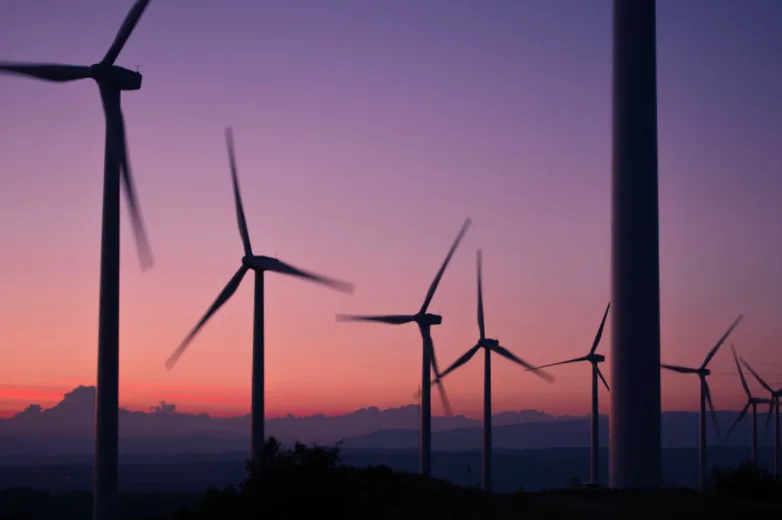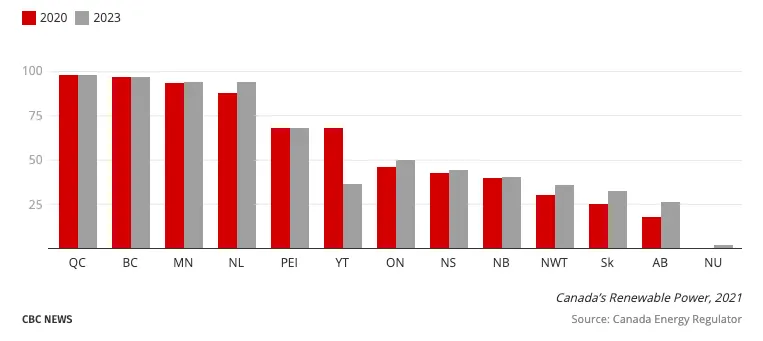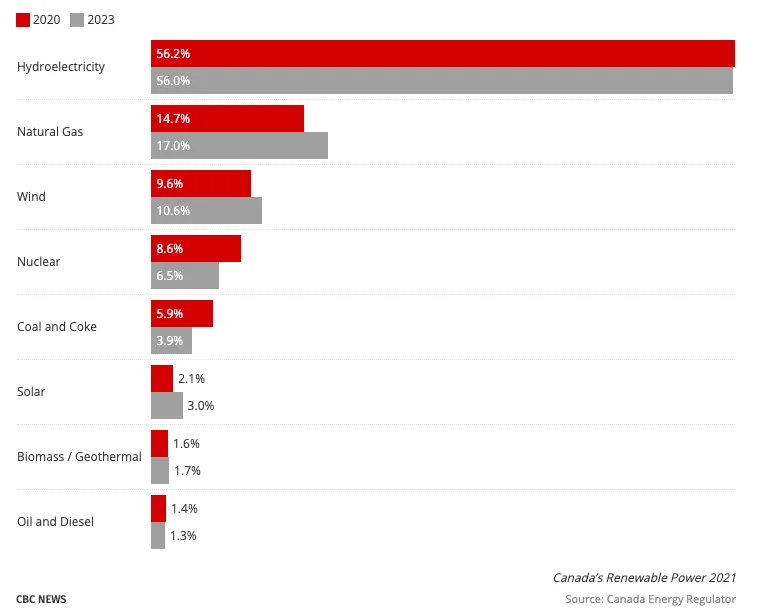
These Prairie provinces are set to outpace the country in renewables growth
The home of Canada's oil and gas industry is expected to lead the country in renewable energy growth, according to the Canada Energy Regulator.
The CER released its short-term outlook today, offering a glimpse of where Canadians will get most of the electricity they use in the future.
Some of the takeaways:
Saskatchewan and Alberta are expected to outpace the country in the transition to renewable electricity.
Ontario's renewable power push is slowing.
Overall, however, the share of Canada's electricity coming from renewables is increasing.
The federal regulator's outlook examines current and future electricity trends for nuclear energy, fossil fuels and renewables — wind, solar, hydroelectricity, biomass and geothermal. It doesn't break down how much provinces and territories rely on non-renewables versus renewables for transportation and heating.
Canada has set an ambitious target of achieving net-zero emissions by 2050. Power generation accounts for 9 per cent of the country's total emissions, with coal and natural gas accounting for most of its greenhouse gas emissions. Alberta is responsible for over 50 per cent of those emissions, followed by Saskatchewan and Nova Scotia.
WHY WOULD THE PRAIRIES LEAD IN RENEWABLES?
While Ontario may have led the growth in renewable energy over the last decade by phasing out coal, it's now expected to be a laggard.
CER's short-term forecast says Alberta is expected to see considerable growth in solar power, while Saskatchewan will more than triple its wind power capacity. Coal is in decline in both Alberta and Saskatchewan and a number of new renewable projects are set to start there.
"I know there are people out there, when they think of Alberta and Saskatchewan, they may think of oil and gas production," said Darren Christie, the CER's chief economist. "The reality is the Prairies are a place with a lot of wind and sun. So it's kind of ripe for growth."
Projected share of power generated by renewables:

Overall, Alberta and Saskatchewan still have a long way to go before they can catch up to hydroelectricity powerhouses like Newfoundland and Labrador, Quebec, Manitoba and British Columbia, which either already produce more than 90 per cent of their electricity from renewables or are expected to hit that benchmark soon.
WHAT DOES THE NATIONAL PICTURE LOOK LIKE?
Canada is one of the world's top producers of non-emitting electricity and the number of green megawatts it generates should continue to increase.
"Canada is already in quite an enviable position," Christie said. "We're one of the top producers of renewable power in the world."
National electricity breakdown 2020-23:

CER said the share of its energy portfolio Canada derives from renewables is projected to rise from about 61.5 per cent in 2010 to 71.2 per cent in 2023. Wind and solar are expected to account for much of that growth, but the bulk of the country's renewable power will still come from hydroelectricity.
This article was originally published by CBC News and written by David Thurton.
Thumbnail credit: Anna Jiménez Calaf/ Unsplash











